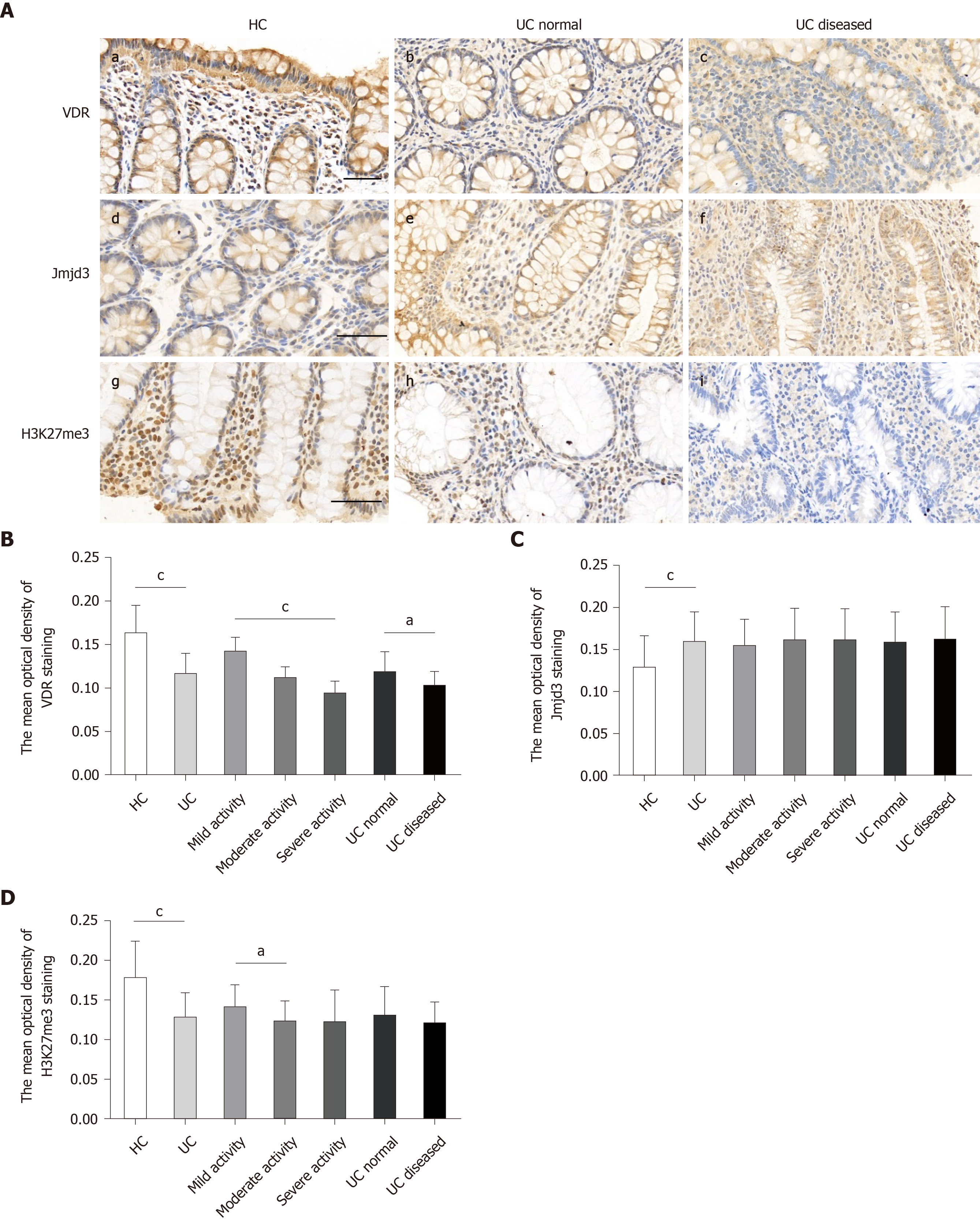Copyright
©The Author(s) 2020.
World J Gastroenterol. Dec 14, 2020; 26(46): 7352-7366
Published online Dec 14, 2020. doi: 10.3748/wjg.v26.i46.7352
Published online Dec 14, 2020. doi: 10.3748/wjg.v26.i46.7352
Figure 4 Vitamin D receptor and trimethylated H3 lysine 27 expression significantly decreased and Jumonji domain-containing 3 increased in the inflamed mucosa of ulcerative colitis patients.
A: Vitamin D receptor was determined by immunostaining for control mucosa (a), for ulcerative colitis (UC) normal (b), and for UC diseased (c). Jumonji domain-containing 3 was determined by immunostaining for control mucosa (d), for UC normal (e) and for UC diseased (f). Trimethylated H3 lysine 27 was determined by immunostaining for control mucosa (g), for UC normal (h), and for UC diseased (i); B: The mean optical density of vitamin D receptor staining in colonic mucosal specimens from controls (n = 22) and UC (n = 56), including UC with mild activity (n = 16), moderate activity (n = 27) and severe activity (n = 13) and UC normal (n = 18) and UC diseased (n = 18); C: The mean optical density of Jumonji domain-containing 3 staining; D: The mean optical density of trimethylated H3 lysine 27 staining. Data, mean ± standard deviation. Original magnification, ´400. Scale bars = 50 μm. aP < 0.05 and cP < 0.001. H3K27me3: Trimethylated H3 lysine 27; Jmjd3: Jumonji domain-containing 3; UC: Ulcerative colitis; VDR: Vitamin D receptor.
- Citation: Wang HQ, Zhang WH, Wang YQ, Geng XP, Wang MW, Fan YY, Guan J, Shen JL, Chen X. Colonic vitamin D receptor expression is inversely associated with disease activity and jumonji domain-containing 3 in active ulcerative colitis. World J Gastroenterol 2020; 26(46): 7352-7366
- URL: https://www.wjgnet.com/1007-9327/full/v26/i46/7352.htm
- DOI: https://dx.doi.org/10.3748/wjg.v26.i46.7352









